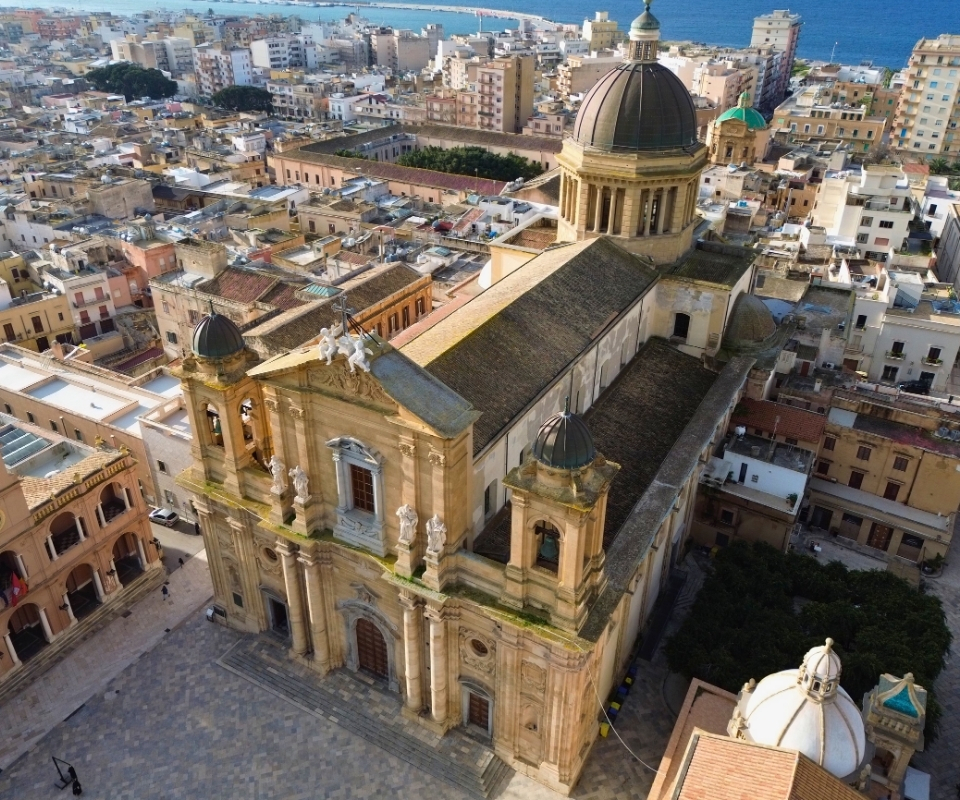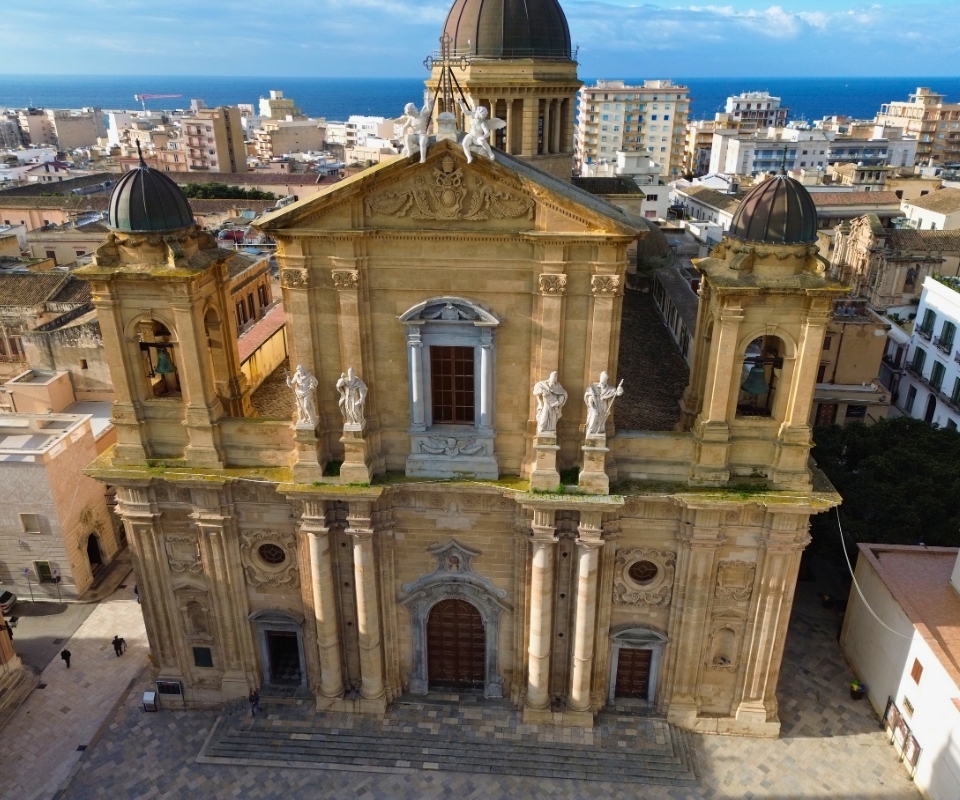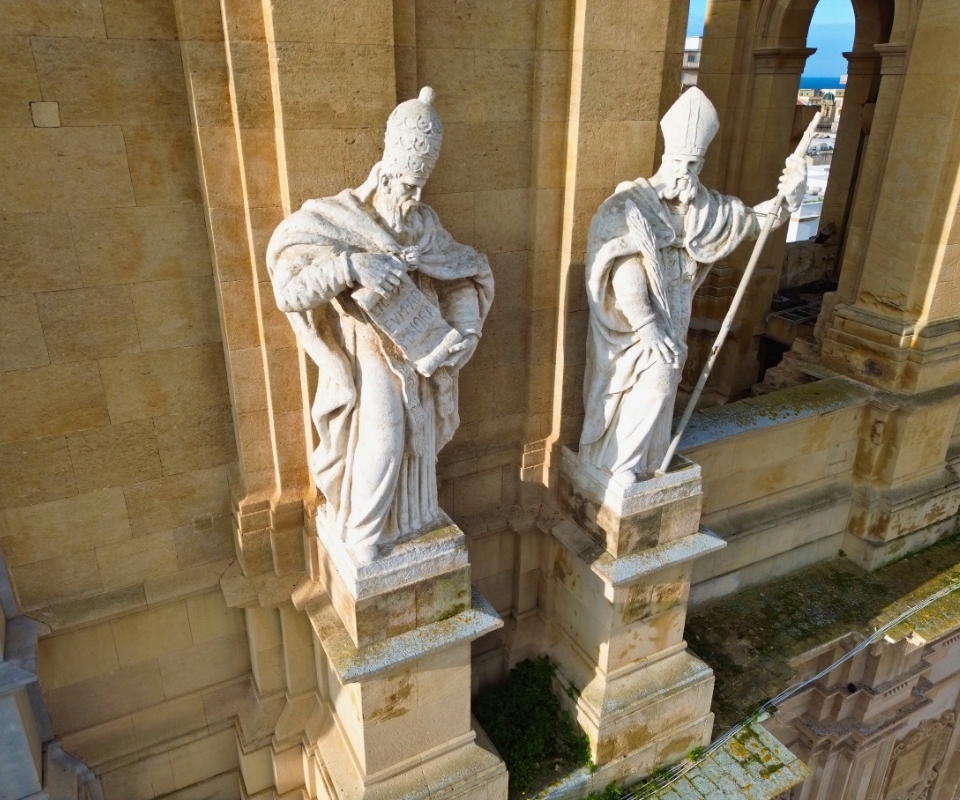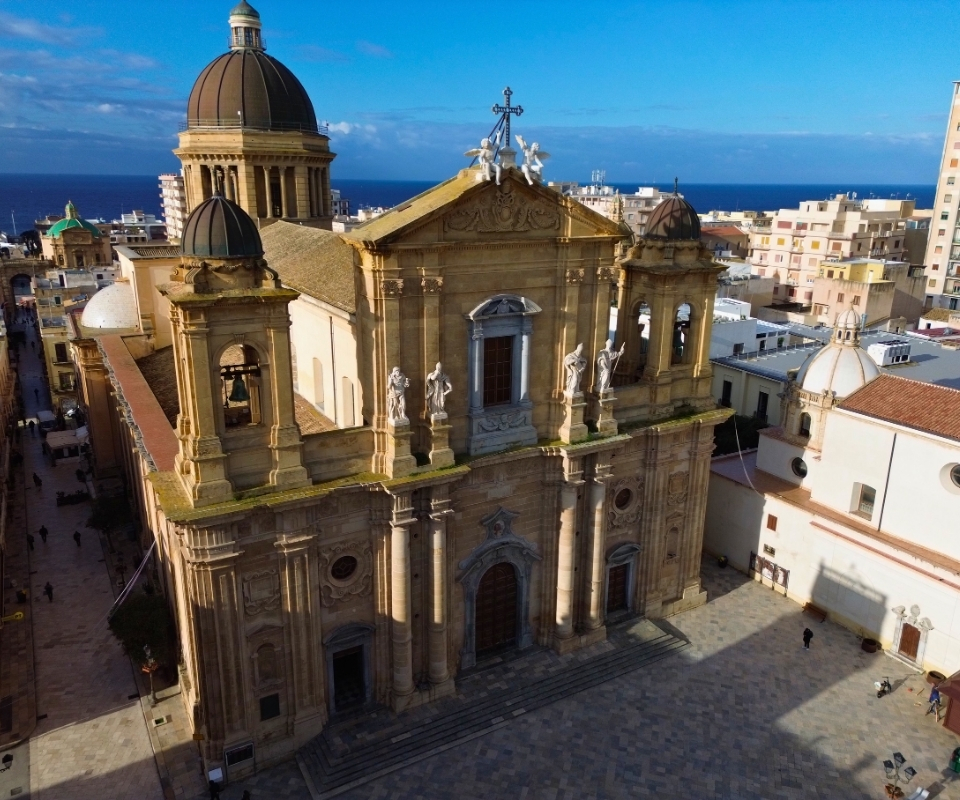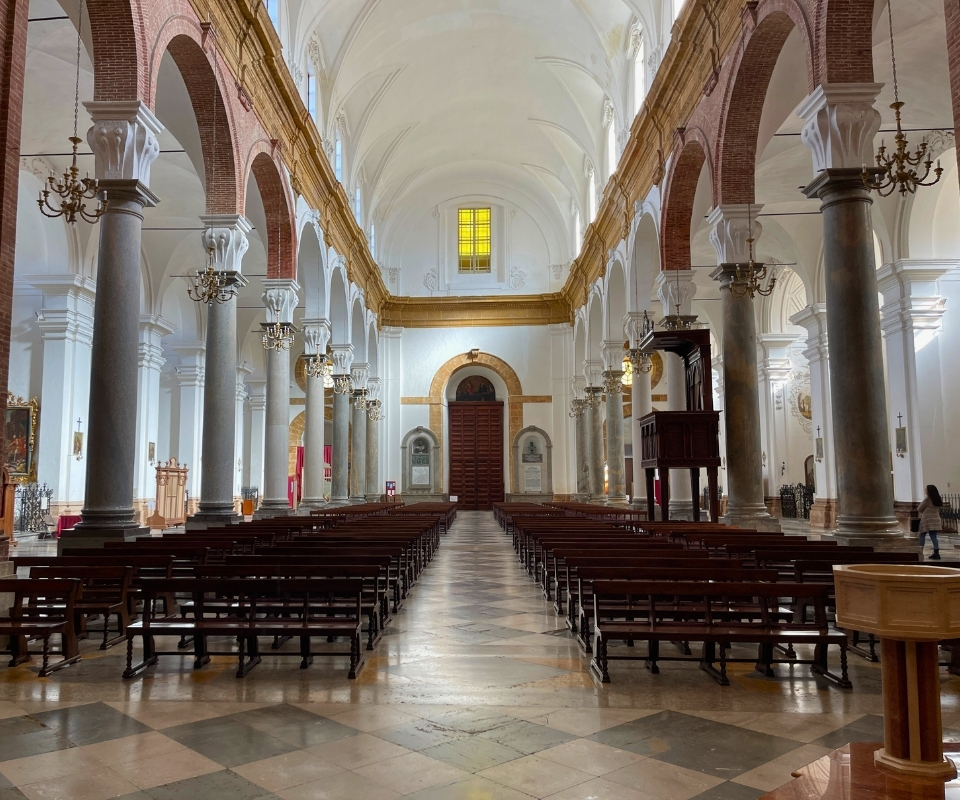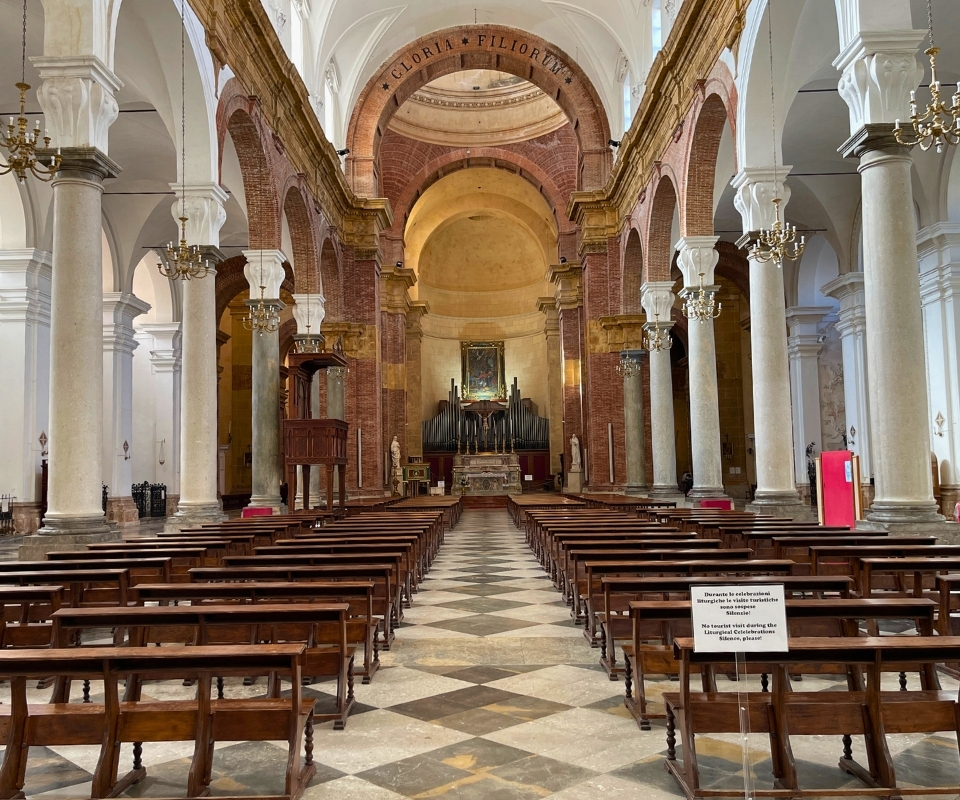The Cathedral of Marsala, approximately eighty meters long and thirty-six meters wide, with its rich Baroque decorations, represents a captivating synthesis of the city’s architectural history, ranging from Norman medieval origins to its eighteenth-century renovation. The current cathedral was founded around eleven seventy-six during the Norman period, dedicated to Saint Thomas Becket following a legendary event: tradition says that a ship loaded with Corinthian columns destined for a church in England dedicated to Saint Thomas was shipwrecked on the shores of Marsala. The marble columns recovered from the wreck were used in the cathedral’s construction, leading to the dedication to the English saint.
The church underwent several expansions, notably starting in sixteen-oh-seven when it became insufficient for the growing number of worshippers. It reopened in sixteen fifty-six, with the completion of the transept and apse in time for the Corpus Domini celebrations. The large Baroque façade, made of exposed calcarenite stone, was only fully completed in nineteen fifty-six. It features horizontal development, flanked by twin bell towers at the corners, each topped by small domes and adorned with four statues depicting Saint John the Baptist, Saint Thomas Becket, Saint Leo, and Saint Gregory the Great. This ornate facade, with its marble portals and lavish Baroque elements, makes the Cathedral one of Marsala’s most iconic monuments.
Inside, the cathedral has a basilica layout with three naves, along which twelve side chapels built between the fifteenth and seventeenth centuries are positioned. The sacred interior is enriched with numerous artworks, including marble statues and paintings depicting saints significant to local traditions. Particularly notable is the large painting in the apse depicting the martyrdom of Saint Thomas Becket, the church’s patron saint. Among the notable Renaissance artworks are sculptures attributed to the Gagini school: the Madonna del Popolo by Domenico Gagini, dating back to fourteen ninety, and a marble altarpiece completed by Antonello Gagini in fifteen thirty-two, both displayed in side chapels. The presence of ancient sarcophagi containing remains of notable historical figures—bishops, magistrates, philosophers—highlights the Cathedral’s central role throughout Marsala’s history.
360° Virtual Tour
How to get there



